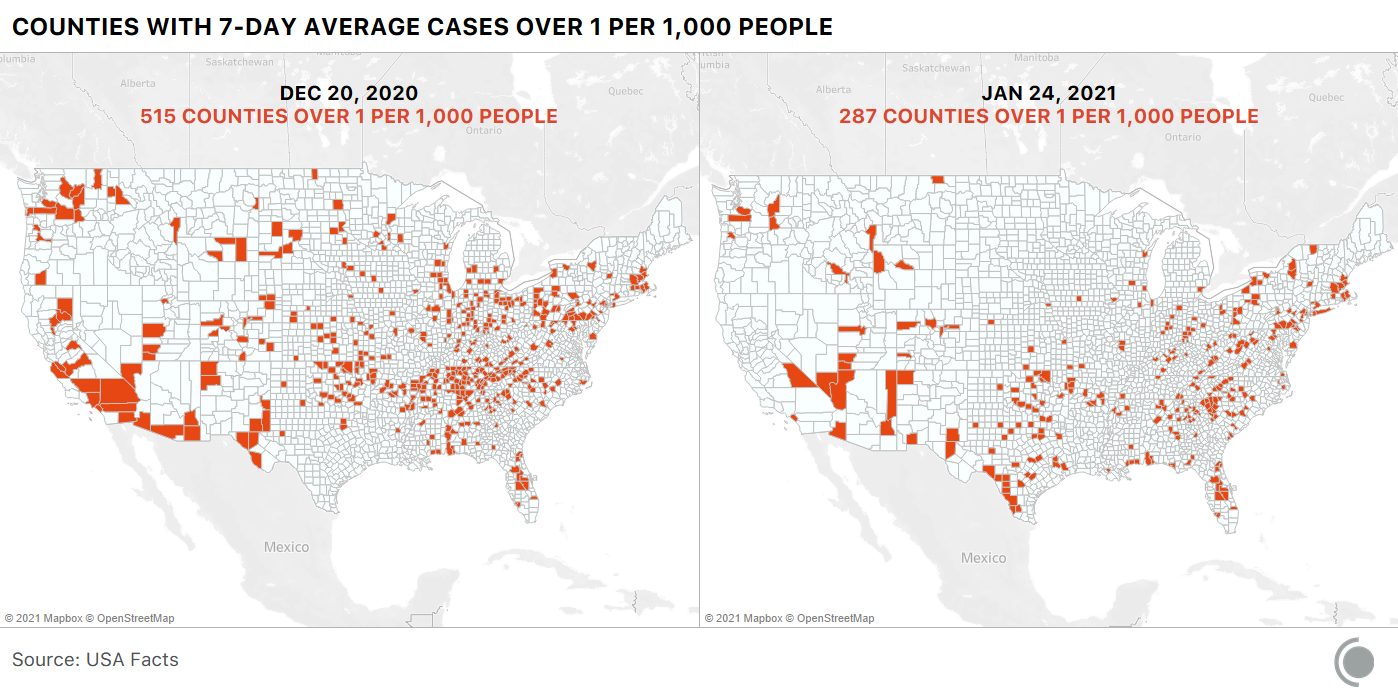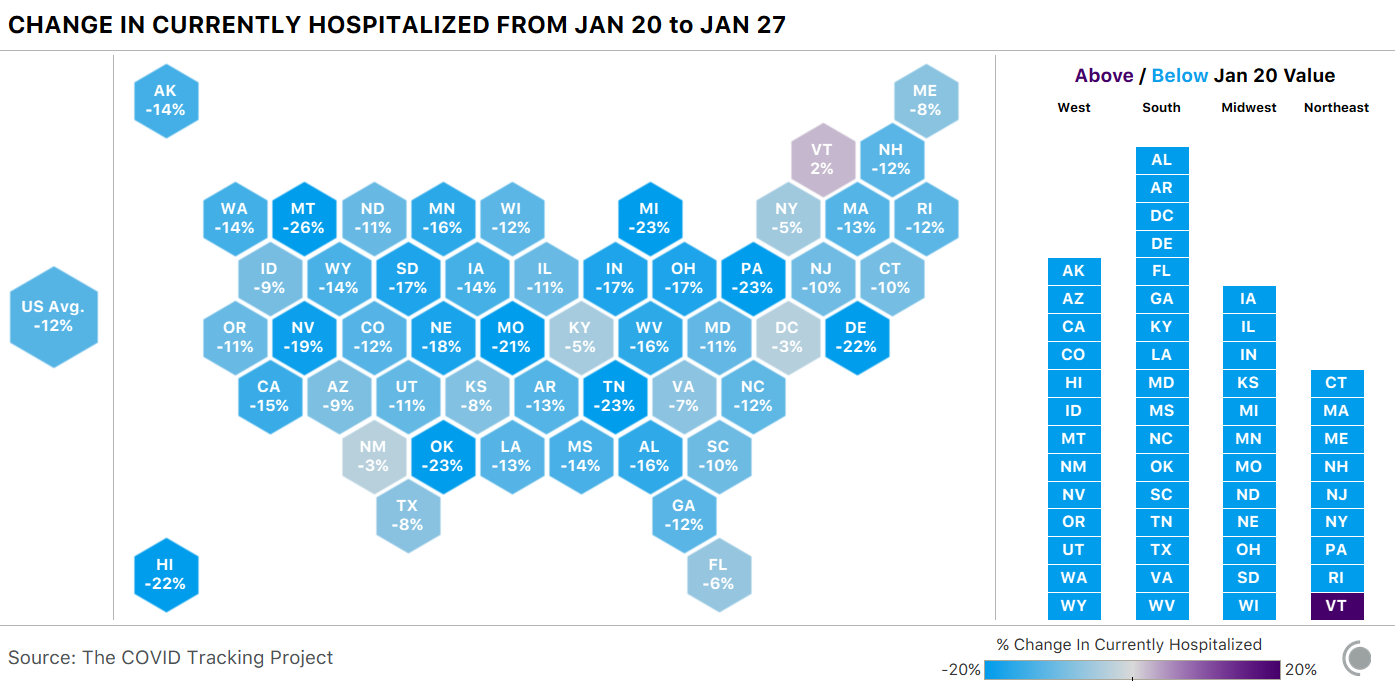The figures we are able to provide for long-term-care facilities in the United States are an undercount—and we still don’t know how many cases and deaths we’re missing. New York, the epicenter of the deadly first U.S. surge, does not report case numbers for long-term-care facilities, and its death count excludes residents who died in hospitals or other locations outside the facilities where they lived. New York’s attorney general has released a report stating that Governor Andrew Cuomo’s administration has undercounted deaths in nursing homes and other LTC facilities by up to 50 percent. Additionally, neither Arizona nor Missouri releases any cumulative data on LTC cases or deaths. For these states, we’ve partly filled in the missing data by including the figures reported by the states’ largest counties.
Nationwide, new cases among white and Black people are down more than 10 percent compared with the previous week, and new cases among Latino people are down more than 20 percent, the second week in a row with fewer new cases for all three groups. Cases among Indigenous people were also lower the past two weeks than during the previous two weeks. We would like to provide similar reporting on race and ethnicity among hospitalized COVID-19 patients, but only 23 states report any race or ethnicity data for hospitalization. The number of new deaths rose this week compared with the previous week for all the race and ethnicity groups for which we have data.
A county-level view using case data compiled by USA Facts shows a marked reduction in particularly severe outbreaks in the past month. On December 20, there were 515 counties with a seven-day average of more than one case per 1,000 residents. As of January 24, only 287 counties had outbreaks that were equally severe. This measure tends to highlight areas with small populations and severe outbreaks—even devastating outbreaks in major metro areas have not recently reached such high case concentrations—and this tendency highlights the smaller and more rural counties that may experience locally intense outbreaks without causing state-level numbers to move substantially.
The national improvements in hospitalization figures this week reflect a drop in hospitalizations in almost every state—a mirror image of the awful weeks in November when hospitalizations were rising almost everywhere at the same time. Only a single state, Vermont, saw hospitalizations rise this week, but by only 2 percent. (Vermont currently has fewer than 50 people hospitalized with COVID-19.) It’s the first week since November 5 that no state has reached a new record high for current hospitalizations.
Hospitalizations are still very high—much higher than at any time before the third case surge arrived this fall—but they are now about one-quarter of the way back toward the baseline of about 30,000 hospitalizations that we previously experienced in early October. The number of people with COVID-19 in U.S. hospitals is also dropping faster now than it did in August, when we previously saw a sustained drop in hospitalizations.








